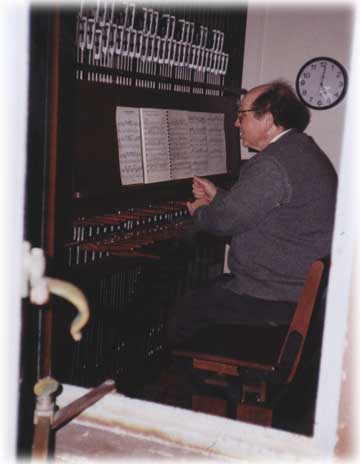 by Preston MacDougall December 21, 2005
Please, God, give me strength to get through this, even though I haven't slept, or eaten much lately. Help me to know the difference between right and wrong (answers). If they happen to be taking a night class, their prayer will coincide with the Office of vespers, or the evening prayers, at the nearest cathedral or monastery. "Vesper" also happens to be the way a crucial theoretical concept, that the students are sure to be tested on, is mispronounced.
Around the world, general chemistry textbooks all devote a chapter, or a good part of one, to the concept of molecular shape - why it is key to many types of chemistries, how to measure it, and even how predict it. Students can easily regurgitate instances where molecular shape is a prime factor, such as catalysis by enzymes, or octane numbers of fuels. And measuring molecular shape is a difficult task - one that they may encounter in advanced chemistry labs as a senior. Using quantum theory, accurate predictions of molecular shape are possible, but not without a computer. However, thanks to Professor Ron Gillespie's Valence-Shell Electron-Pair Repulsion Model, chemistry students can quickly predict the approximate shape of an unlimited number of molecular possibilities - with paper and pencil. This model is known worldwide by its acronym, VSEPR, which is usually pronounced "vesper". As an undergraduate student at McMaster University, in Canada, I was fortunately blessed to have Professor Gillespie himself teach me about the model. It wasn't until after the course was over that I learned it was his model. Born and educated in London, England, in many ways Ron Gillespie is a merry gentleman. He is well into his eightieth year, and still travels the world, sharing his latest ideas, and teaching how to teach chemistry. I hope that his influence on me was apparent to those who came to my recent seminar at Duke University. It was in a lecture room named after a former Duke chemistry professor, and another gentleman who came from Europe to teach chemistry in America - Fritz London. Looking back, it is amazing how far-sighted his vision was. His ideas, all over 50 years old now, still resonate strongly in fields as diverse as low-temperature physics and protein chemistry. By all accounts he was a gifted teacher and merry fellow. Unfortunately for science, he died at the early age of 54. Also resonating across the quad, beginning at 5 o'clock every evening, are the 50 bells in the carillon of the grand neo-Gothic Duke Chapel. Just before vespers, my college-shopping son and I, accompanied Mr. Sam Hammond, a true Southern gentleman and the Duke carillonneur, were uplifted to the top of the Chapel tower by its small, tubular elevator. There, I got a bird's-eye view of the beautiful Duke campus, and a bottom-up look at the bell bottoms. While molecules come in different sizes and shapes, the 50 carillon bells ranged in diameter from just over 6 inches to just under 7 feet, but they all had the same shape - a bell curve. For grading exams, bell curves are a truly ugly idea. But the harmonious sounds that the bells can produce are quite delightful. When you are standing underneath them, they are also quite loud! The purpose of a carillon is not just to make sound, but beautiful music. Like the molecular possibilities within the scope of the VSEPR model, the number of possible songs that Mr. Hammond could have played during vespers was virtually unlimited. With Christmas just weeks away, a special request was made: "God Rest Ye Merry, Gentlemen." It was lovely. The joyful chords swooping down over the studious campus contained no hint of the vigorous pounding and stomping of levers by Mr. Hammond, in what he merrily called his "flailing room." I learned that Mr. Hammond, who is also a librarian in the Rare Books Collection at Duke, was trained to play the carillon by the previous carillonneur, who was a graduate student. Sam was a sophomore at the time, and has been ringing the Chapel bells for over 40 years now! God rest ye, Mr. Hammond.
Publish A Letter on SitNews Read Letters/Opinions Submit A Letter to the Editor
|
||
